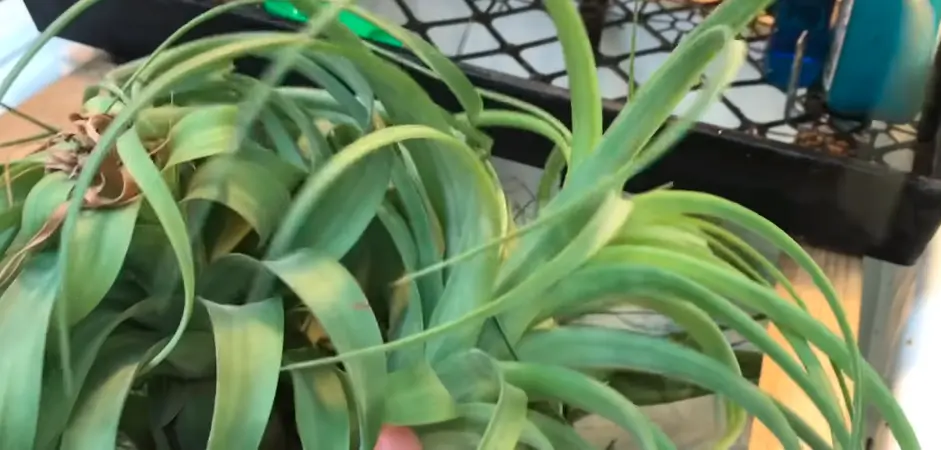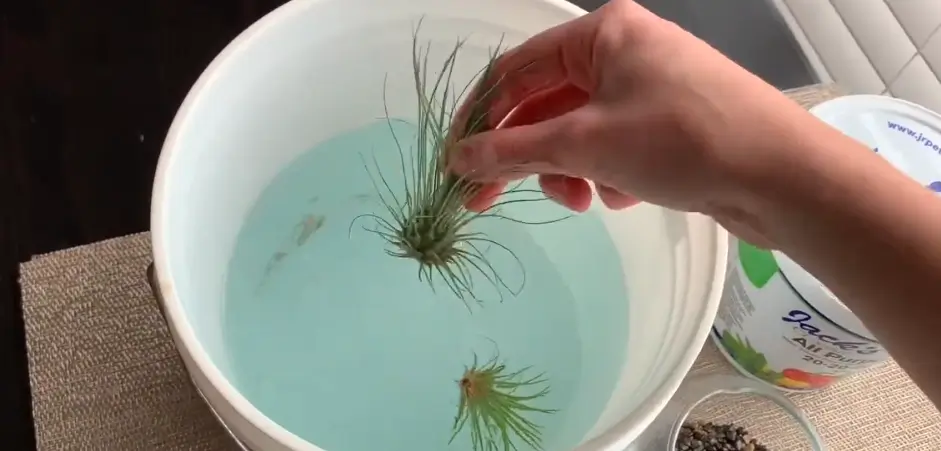How To Fertilize Air Plants: Step By Step Guide
Air plants have taken the world by storm with their unique beauty and ease of care. These plants don’t require soil to grow, making them perfect for those who want to add greenery to their homes without the hassle of traditional plant care.
However, while they may not require soil, air plants still need nutrients to thrive. This is where fertilization comes in. Fertilizing air plants can seem daunting for beginners, but it’s actually a simple process that can greatly benefit the plant’s growth and health.
So, how to fertilize air plants? To fertilize air plants, you can use a diluted liquid fertilizer once a month, misting the plants lightly with the solution. Ensure the fertilizer you use is specifically formulated for air plants.
In this guide, we’ll explore the ins and outs of fertilizing air plants, including what fertilizers to use, when to fertilize, and how to apply them.
Does My Air Plant Need Fertilizer?
Air plants, also known as Tillandsia, can benefit from occasional fertilization to support their growth and flowering. While they do not need soil to grow, air plants still require essential nutrients such as nitrogen and zinc, which can be provided through fertilization.
Liquid fertilizer can be used, and it is best to dilute it with tap water before applying it to the plant’s surface. Fertilizers should be applied a few times per year, depending on the type of air plant and the method of application.
So, when fertilizing, you should avoid direct sunlight and use a bowl of water or a black stone bowl to avoid damaging the plant’s surface.
The Best Natural Fertilizer For Air Plants
To support air plants’ growth, these plants require some fertilizer. Here, we will explore the best natural fertilizer for air plants.
- Liquid Fertilizer: Liquid fertilizers are popular because they are easy to use and provide a quick source of nutrients. However, be careful not to over-fertilize as this can damage the air plant. Dilute the fertilizer and apply it to the leaves once a month.
- Zinc: Zinc is a trace mineral that air plants require in small quantities. You can provide zinc by adding a few drops of zinc sulfate to the water you use for misting or dunking the air plant.
- Tap Water: If your tap water contains enough minerals and nutrients, you can use it to mist or soak your air plant. However, if your water is soft or treated, you may need to supplement it with fertilizer.
- Bowl of Water: One simple way to fertilize your air plant is to soak it in a bowl of water with a few drops of liquid fertilizer. Soak the air plant for 30 minutes once a month.
How To Fertilize Air Plants [Step-by-Step Guide]
Like all plants, air plants also require fertilization to stay healthy and vibrant. Here, we will discuss some tips and techniques for fertilizing air plants.
1. Understanding the Nutritional Requirements of Air Plants
Before we dive into the process of fertilizing air plants, understand their nutritional requirements. Air plants primarily require three essential nutrients, nitrogen, phosphorus, and potassium.
Nitrogen is essential for leaf growth, while phosphorus promotes flower and root development. Potassium, on the other hand, enhances overall plant health and helps plants resist stress and disease.
2. Choosing the Right Fertilizer for Air Plants
Air plants have unique needs, and thus, they require special fertilizers that are specifically formulated for their requirements. When it comes to choosing a fertilizer for air plants, look for a water-soluble fertilizer that contains essential nutrients in a balanced ratio.
Avoid using chemical fertilizers as they can damage the leaves of air plants. Instead, opt for organic fertilizers that are gentle on the plants and help promote healthy growth.
3. Fertilizing Techniques for Air Plants
Now that we have discussed the nutritional requirements and the right fertilizer for air plants, let us move on to some fertilizing techniques:
- Soaking: Soaking air plants in a diluted fertilizer solution is one of the easiest and most effective ways of fertilizing them. Mix the fertilizer according to the instructions on the label and soak the plant for 30 minutes once a month.
- Mist Spraying: Mist spraying is an effective way of providing air plants with the nutrients they need. Mix the fertilizer with water in a spray bottle and spray the plant once a week. Spray the plant until the leaves are wet but not soaking.
- Fertilizer Bath: Another way of fertilizing air plants is by giving them a fertilizer bath. Fill a bowl with water and mix the fertilizer in it. Soak the plant in the water for 20–30 minutes once a month. Rinse the plant thoroughly after the bath.
- Top Dressing: Top dressing is a process where you sprinkle fertilizer on top of the soil or the leaves of the air plants. Use a small spoon to sprinkle the fertilizer on the leaves or soil once a month. Ensure not to over-fertilize, as it can damage the plant.
When To Fertilize Air Plants
Air plants are unique plants that don’t require soil to grow. Instead, they absorb nutrients and moisture from the air. While they don’t need traditional fertilizers, they can benefit from occasional feeding to support their growth and health.
The best time to fertilize air plants is during their active growing season, which is typically from spring to fall. You can use a diluted, water-soluble fertilizer, such as a bromeliad or orchid fertilizer, and apply it once a month.
It’s important not to over-fertilize air plants as it can damage their delicate leaves and roots. You should also ensure that the plant is completely dry before fertilizing and avoid getting the fertilizer on the leaves as it can cause burn spots.
Common Mistakes To Avoid When Fertilizing Air Plants
To promote healthy growth and beautiful flowers, fertilizing air plants is necessary. Here are some common mistakes to avoid when fertilizing air plants:
Using Regular Plant Fertilizer
One of the biggest mistakes people make when fertilizing air plants is using regular plant fertilizer. Air plants require a specialized air plant fertilizer that is formulated to meet their unique nutritional needs. Regular plant fertilizers contain too much nitrogen, which can damage the plant and cause it to burn.
Over-Fertilizing
Over-fertilizing is another common mistake when it comes to air plants. It’s essential to follow the manufacturer’s instructions carefully and only fertilize your air plants as recommended. Over-fertilizing can cause the plants to grow too quickly, resulting in weak growth and a shorter lifespan.
Fertilizing Too Often
Fertilizing air plants too often can be harmful to their growth. It’s recommended to fertilize air plants once every two to three weeks during the growing season, which typically runs from March to September. During the dormant season, from October to February, fertilizing should be reduced to once per month.
Using Tap Water
Using tap water to fertilize air plants can be harmful to their growth. Tap water contains minerals that can build up on the leaves and cause damage over time. It’s recommended to use filtered, bottled, or rainwater to fertilize air plants.
Not Providing Adequate Sunlight
Air plants require adequate sunlight to thrive. They should be placed in an area that receives bright, indirect sunlight for at least a few hours a day. Direct sunlight can damage the leaves, so it’s best to avoid placing air plants in direct sunlight.
Using the Wrong Fertilizer Type
Not all air plant fertilizers are created equal. Some fertilizers are designed for specific types of air plants, so choose the right fertilizer for your plants. Some air plant fertilizers contain zinc, which can be harmful to some types of air plants. It’s crucial to research the type of air plant you have and choose a fertilizer that is appropriate for its specific needs.
Wrapping Up
Fertilizing air plants is an important part of their care. Hopefully, you should understand how to fertilize air plants, after reading the discussion above. Typically, the best way to fertilize air plants is to use a liquid fertilizer diluted to half-strength and applied every two weeks during the growing season.
However, fertilizing should be done in the morning so that the excess can dry off during the day. Additionally, when fertilizing, use a fertilizer specifically designed for air plants, as these plants have unique nutritional needs. With these tips in mind, air plants can be effectively fertilized and kept healthy.


